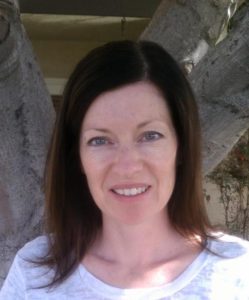Ecodeviance
CA Conrad
160 pages, paper and cloth
ISBN 978-1-940696-01-0
Wave Books, 2014
Review by Heather Sweeney
Prologue:
I sat with my rose quartz crystal and asked for guidance on how to process and write about C.A. Conrad’s latest collection, Ecodeviance (Soma)tics for the Future Wilderness. I don’t usually ask for help. It was my somatic gesture for the day. My sister is a Vedic Astrologer, and she informed me that we were, that day, in Bharini: the star constellation around the moon. We were perceiving things through this lens. Like a theory. Bharini is three stars in a downward pointing triangle. You might feel overwhelmed, but that’s the burden of a mother. We need to learn to ask each other for help. And give love to others. Transitions should be smooth. There is a solidity to the day.
*
The pages of CA Conrad’s new collection are energy containers for essay and instruction, poetic rituals and somatics. Chance. Through his instructions, he provides unorthodox ways to arrive at the poem. For example, why not ride up and down an escalator and show a picture of yourself and ask, “have you seen this person?” Sometimes the experiments reveal a realization: “the biggest mistake for/love is straining.” A mixture of light and solids. Or often a surprise, a “craving for wonder.” With Conrad, the reader feels as if on the verge of a new realm of existence, or at least on the periphery of an undiscovered color.
*
I placed my quartz crystal on the book overnight. These pages are fields of healing crystals. A crystal text. Crystal gestures full of strange angles. These are visceral experiments spliced with memory.
*
What is the source of creativity? Presence. Chance operations. Conrad instructs the reader with essays followed by a poem or series of poems. These procedures are radical ways of being in the world. New gestures. Awareness of our tangible and intangible worlds as possible materials for creative work. This book is the contemplative at work, and at play.
What happens when the poet moves beyond the personal and enters into the current cultural arena? Conrad is not afraid to risk the self in both public and private spheres. Would we walk around JFK Blvd. in Philadelphia and ask passersby to rate their own semen, looking for those who were not afraid to face the “feral interior”? Who among us will talk to crystals? Go thirsty for poetry? These types of risks are necessary to the process of discovery. Conrad provokes us to ask what new angle we will act upon. To claim a new territory while remaining authentic. To reclaim histories of grief and abuse and heal through writing. “Act no different than you feel,” he implores us. Conrad’s work reveals that we are intuitive creatures, linked to each other in ways that we cannot always see or completely understand: “my antlers my antennae/touching/your/wall catching my name in a rumor.” Here, we are animal again, back to our original state.
“How is wilderness memorized into the body?” Conrad asks us to consider the origin body, and what have we left behind. He offers manifestations of a socio-spiritual awareness, contemplating how we can live on “a planet coping with seven billion/human breaths a second.” How can we sustain ourselves? “Margins were permitted to drop in meditation.” This book is an experience of the body in relation to and in communion with nature. Trajectories in relation to the potential of the page. A crystallization.
*
Post-Script
My sister left me a clarification text: the moon constellation is referred to as a nakshatra. So: the nakshatra for today is Bharani. Also, make sure your oven is off.

Heather Sweeney is an MFA candidate and Allen Ginsberg Fellow at the Jack Kerouac School of Disembodied Poetics at Naropa University. Her poetry and book reviews have been published in Dusie, Cutbank, Shampoo, canwehaveourballback? Summerstock and Galatea Resurrects. When she is not in Boulder, she lives in San Diego with her husband and beloved dog, Dexter.
